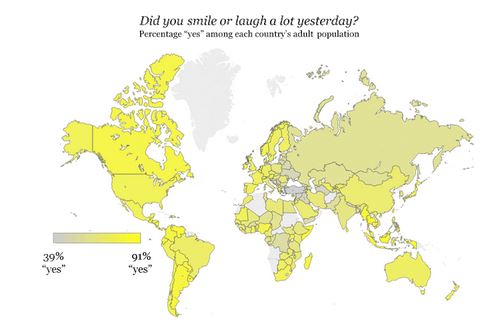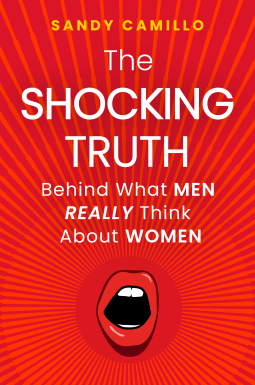Part 3 of 5 of the "What Americans Can Teach Europeans" Series
 Europeans often criticize the “American smile.” They say that Americans are fake, because they often smile when they are not really happy. Americans pretend to be happy to see you, when they’re not. A customer service representative might greet you with a cheery, “Hi! How can I help you?” when she’s really a mean bitch.
Europeans often criticize the “American smile.” They say that Americans are fake, because they often smile when they are not really happy. Americans pretend to be happy to see you, when they’re not. A customer service representative might greet you with a cheery, “Hi! How can I help you?” when she’s really a mean bitch.
Eastern Europeans somehow think that they are superior because they give you a scowl instead of a smile. Frankly, I’ll take a fake smile everyday over a sincere scowl. I might delude myself, but I don’t care. It just feels better. Why, when we have the choice between giving a smile or a frown, should we opt for a frown? The waiter and the person at the checkout counter has a choice. Why not put on a smile?
Some may say it’s not simply a choice between a frown or a smile. There’s a third way, the European way, which is a neutral face. This, Europeans claim, is the most sincere. “Why should the store representative smile at you when he doesn’t even know you? That’s insincere,” the Europeans argue. “It’s better to have a neutral face.”
Look at yourself in the mirror and put on your best neutral face. Imagine someone just walked into your store and you’re wearing that neutral face. What does it look like to the customer? It looks a bit cold, distant, unfriendly, and unapproachable. Obviously a frown is even worse, but the neutral look is off-putting too.
Furthermore, the neutral look would be fine if the customer service agent would immediately brighten up once they learn that you’re not trying to rape their daughter. However, they don’t. Even after you smile and are friendly, they often keep that same neutral, ambivalent face throughout the transaction. In Eastern Europe the neutral look will sometimes turn into a tirade against your simple attempts of communication. It makes for a lousy and cold experience.
The Eastern European tries a different argument: “Fine, so we’re a bit cold at the beginning, but eventually we warm up, and when we do, you’ll have a friend for life.” So what? Do you want a freaking medal?
Newsflash: Americans make lifelong friends too. Like any human, we usually take our time before reaching that point. The difference is that we don’t use that as an excuse to be an asshole at the beginning.
Moreover, the American smile isn’t as fake as it seems. Many Americans are genuinely happy. Americans are positive people who usually give strangers the benefit of the doubt. There are plenty of cynical Americans, but when it comes to one-on-one interactions, Americans often assume that the other person is a good guy. That makes them sincerely smile.
Of course, I have a cultural bias because I grew up in America, the land of the smiles. However, America doesn’t have a monopoly on smiles. Most people from Asia, Latin America, Africa, and Oceania all tend to wear a smile on their face by default. Their service personnel smile warmly often. In other words, judged on a global scale, Americans aren’t weird because they smile so much. It’s the Eastern Europeans who are weird because they smile so little.
See Gallup poll
P.S. Southeastern Europe (especially around Bosnia, Macedonia, Albania, and Southern Serbia) people have a tendency to smile as much of most of the non-European world.
In case you missed it, read part 1 of the What Americans Can Teach Europeans article series.
Next Article: Part 4 of 5 - Defending American Ignorance
This is an excerpt from the Appendix of The Hidden Europe: What Eastern Europeans Can Teach Us. Although this article is filed under Western Europe, its message is for Eastern Europeans and everyone else on the planet who believes these five American myths. For those who worry that fanatical American patriots have brainwashed me, don't worry. About 99% of my upcoming book is about what Eastern Europeans can teach Americans (hence, the title). I'm simply sharing the 1% of my book that argues the contrary point. Please read the Introduction to The Hidden Europe to get the complete picture.





